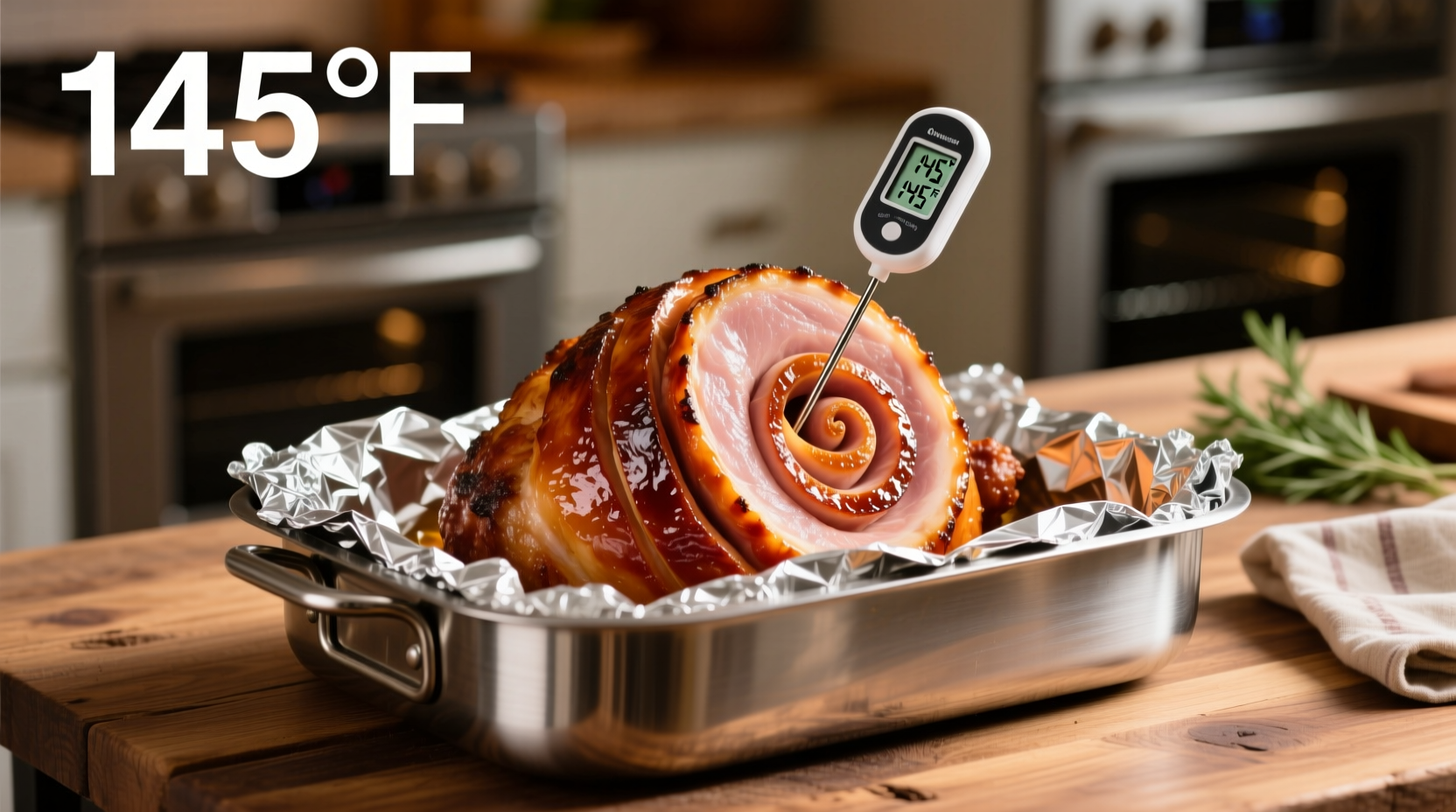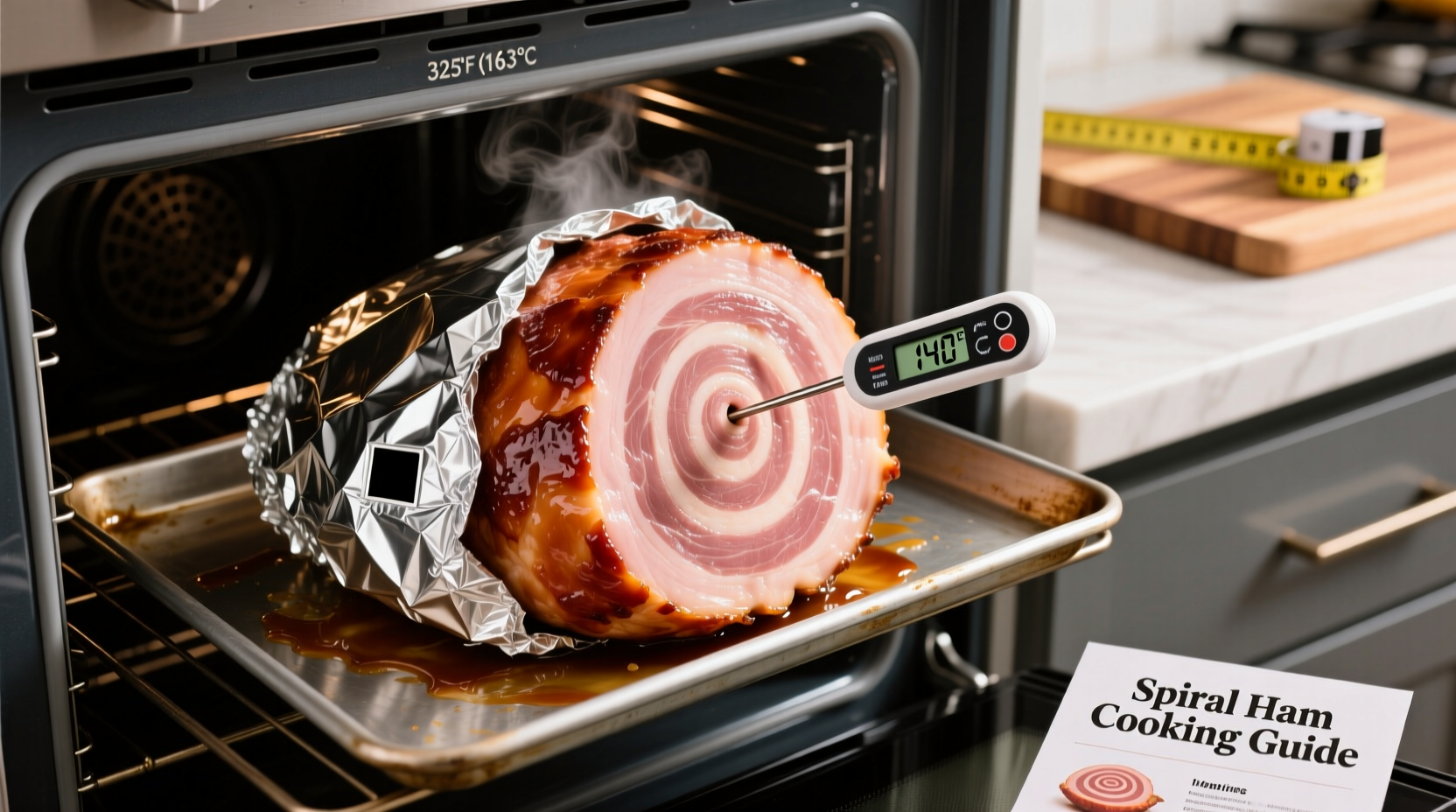Planning your holiday meal and wondering exactly how long to cook a 12 lb spiral ham? You're not alone. Millions of home cooks face this question each year when preparing centerpiece proteins for special occasions. Getting the timing right ensures your ham stays moist, flavorful, and most importantly, safe to eat. Unlike raw meats, spiral hams are fully cooked during processing—your job is simply to reheat them properly without drying them out.
Why Proper Reheating Time Matters for Spiral Ham
Spiral-cut hams present unique challenges compared to whole hams. The pre-sliced nature exposes more surface area, which can lead to moisture loss if overheated. According to the USDA Food Safety and Inspection Service, fully cooked hams like spiral varieties only need reheating to 140°F—not to a higher temperature like raw meats. Exceeding this temperature causes the delicate meat fibers to contract excessively, squeezing out precious juices.
| Ham Weight | Recommended Time (275°F) | Internal Temperature |
|---|---|---|
| 8-10 lbs | 1 hour 45 min - 2 hours 30 min | 140°F |
| 10-12 lbs | 2 hours 10 min - 3 hours | 140°F |
| 12-14 lbs | 2 hours 36 min - 3 hours 30 min | 140°F |
The Science Behind Reheating Pre-Cooked Ham
Understanding why lower temperatures work best for spiral hams helps prevent common mistakes. During commercial processing, spiral hams undergo complete cooking and curing. The reheating process isn't about cooking the meat but rather bringing it to serving temperature while maintaining texture. Research from the National Institute of Food and Agriculture shows that proteins begin to denature aggressively above 140°F, explaining why many home cooks end up with dry ham when using higher oven temperatures.
Lower oven temperatures (275-325°F) allow heat to penetrate gradually without creating a temperature gradient that dries the outer layers before the center warms. The spiral cuts actually help heat distribute more evenly than whole hams, reducing total heating time by approximately 25%.
Step-by-Step Reheating Guide for 12 lb Spiral Ham
Preparation Phase (15 minutes)
Remove ham from refrigerator 30 minutes before cooking to reduce thermal shock. Keep it in its original packaging until ready to place in pan. If frozen, allow 5-7 hours per pound for refrigerator thawing—never thaw at room temperature.
Pan Setup for Moisture Retention
Place ham cut-side down in a roasting pan. Add 1 cup of liquid—apple juice, broth, or water—to the bottom of the pan. Cover tightly with heavy-duty aluminum foil, creating a sealed environment that traps steam. This technique, validated by culinary research at University of Illinois Extension, prevents the exposed spiral cuts from drying during reheating.

Precision Cooking Timeline
For your 12 lb spiral ham:
- Set oven to 275°F (not higher—this is critical)
- Calculate time: 12 lbs × 13-15 minutes = 156-180 minutes (2h36m-3h)
- Position in oven: Middle rack for even heat distribution
- Check temperature at 2 hours using an instant-read thermometer inserted between slices
When the internal temperature reaches 130°F, apply your glaze and continue cooking uncovered for the final 15-20 minutes. The ham will carry over to 140°F during resting.
Troubleshooting Common Spiral Ham Issues
Dry ham? You likely exceeded 140°F internal temperature or didn't use enough liquid in the pan. For future reference, reduce oven temperature to 250°F and increase cooking time by 20%.
Uneven heating? This occurs when the ham isn't positioned cut-side down. The spiral cuts create channels for heat penetration—positioning matters more than with whole hams.
Glaze burning? Apply sweet glazes during the final third of cooking time. The sugars in glazes caramelize quickly at higher temperatures.
Serving and Storage Best Practices
Allow your 12 lb spiral ham to rest for 15-20 minutes after removal from the oven. This lets juices redistribute throughout the meat. When serving, follow the existing spiral cuts—no additional slicing needed. For leftovers, store in airtight containers within 2 hours of cooking. Properly stored, cooked ham remains safe for 3-4 days in the refrigerator.
Frequently Asked Questions
Can I cook a spiral ham at 350°F instead of 275°F?
While possible, higher temperatures increase drying risk. At 350°F, reduce time to 10-12 minutes per pound and check temperature 30 minutes early. The lower 275°F temperature preserves moisture better for spiral-cut hams.
Do I need to add liquid when reheating spiral ham?
Yes, adding 1 cup of liquid (water, broth, or apple juice) to the pan bottom is essential. The steam created prevents the exposed spiral cuts from drying out during the reheating process.
Should I cover the ham while reheating?
Always cover tightly with foil during the main reheating phase. Remove the foil only during the final 15-20 minutes if applying a glaze. The covered environment creates steam that keeps the ham moist.
What's the minimum internal temperature for spiral ham?
The USDA requires fully cooked hams like spiral varieties to reach 140°F internally. Unlike raw meats, they don't need higher temperatures since they're already cooked during processing.











 浙公网安备
33010002000092号
浙公网安备
33010002000092号 浙B2-20120091-4
浙B2-20120091-4